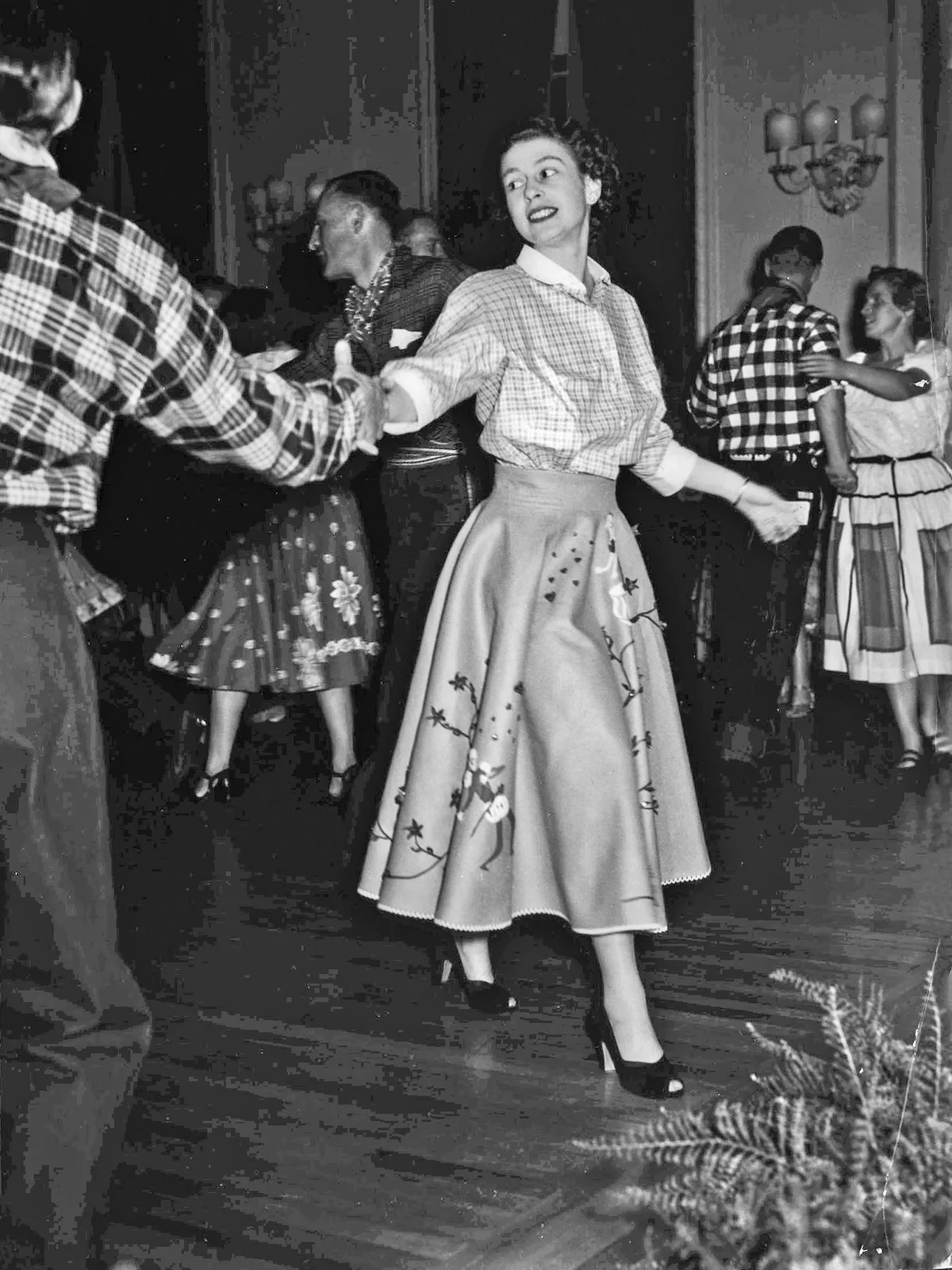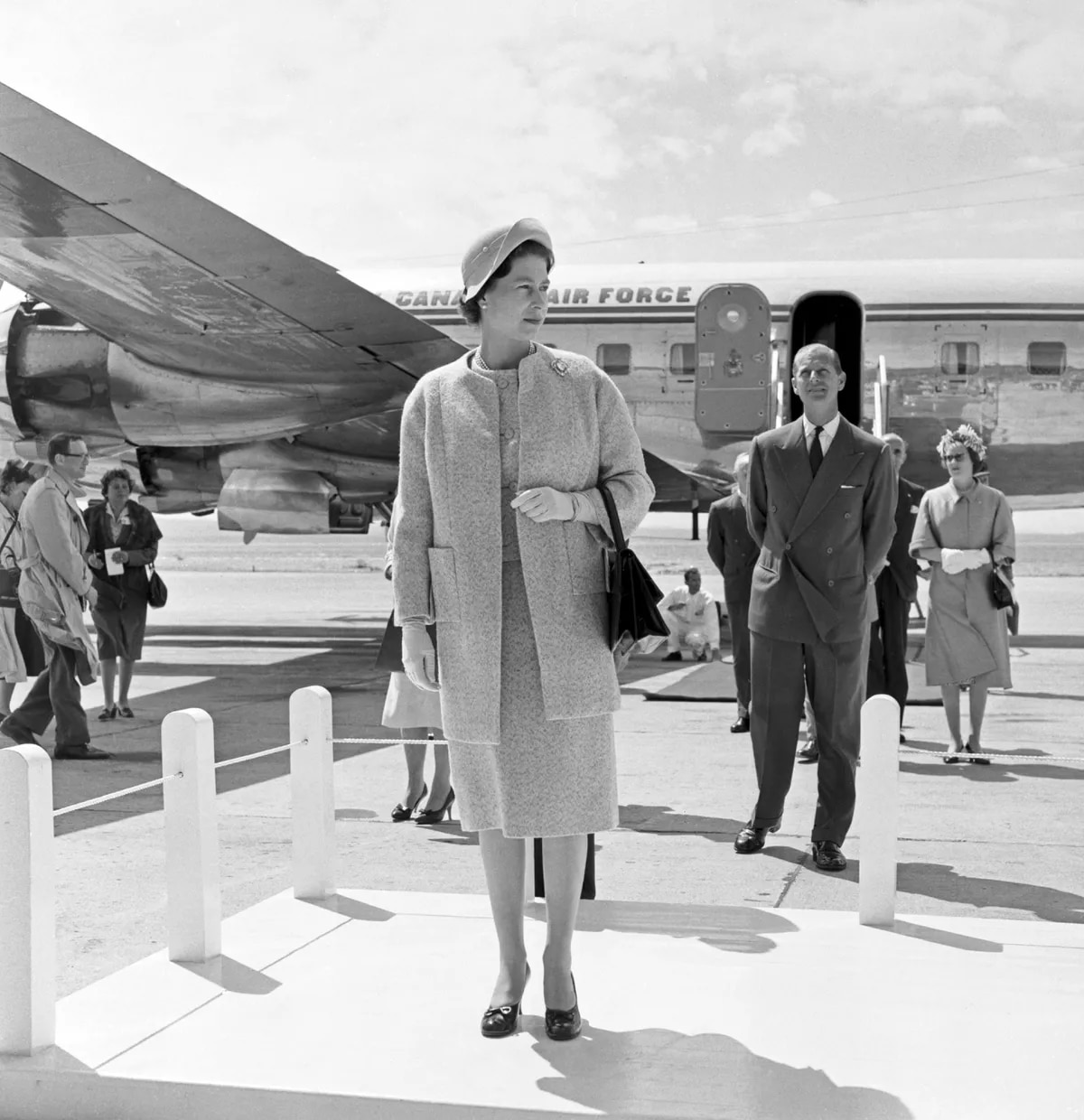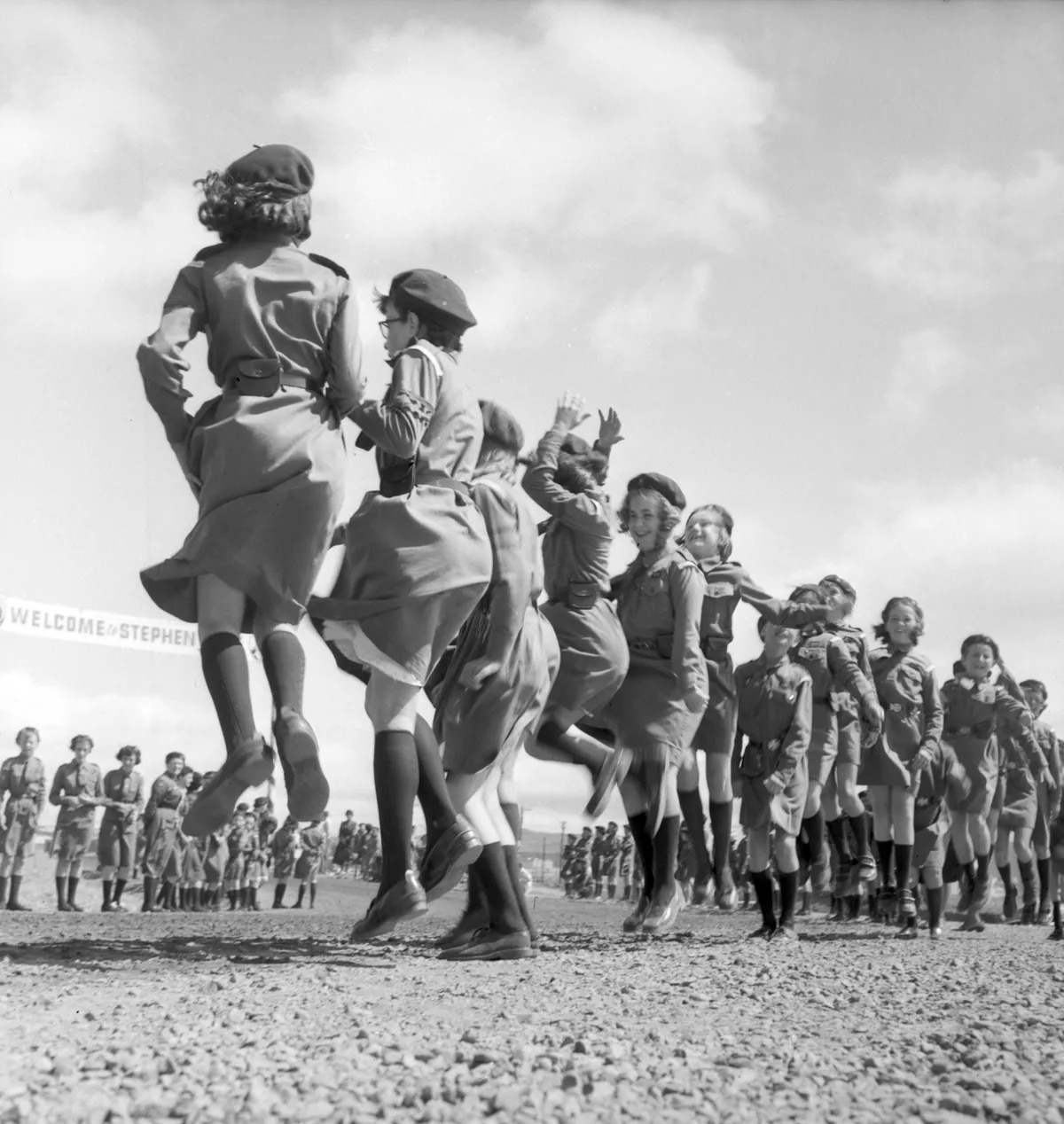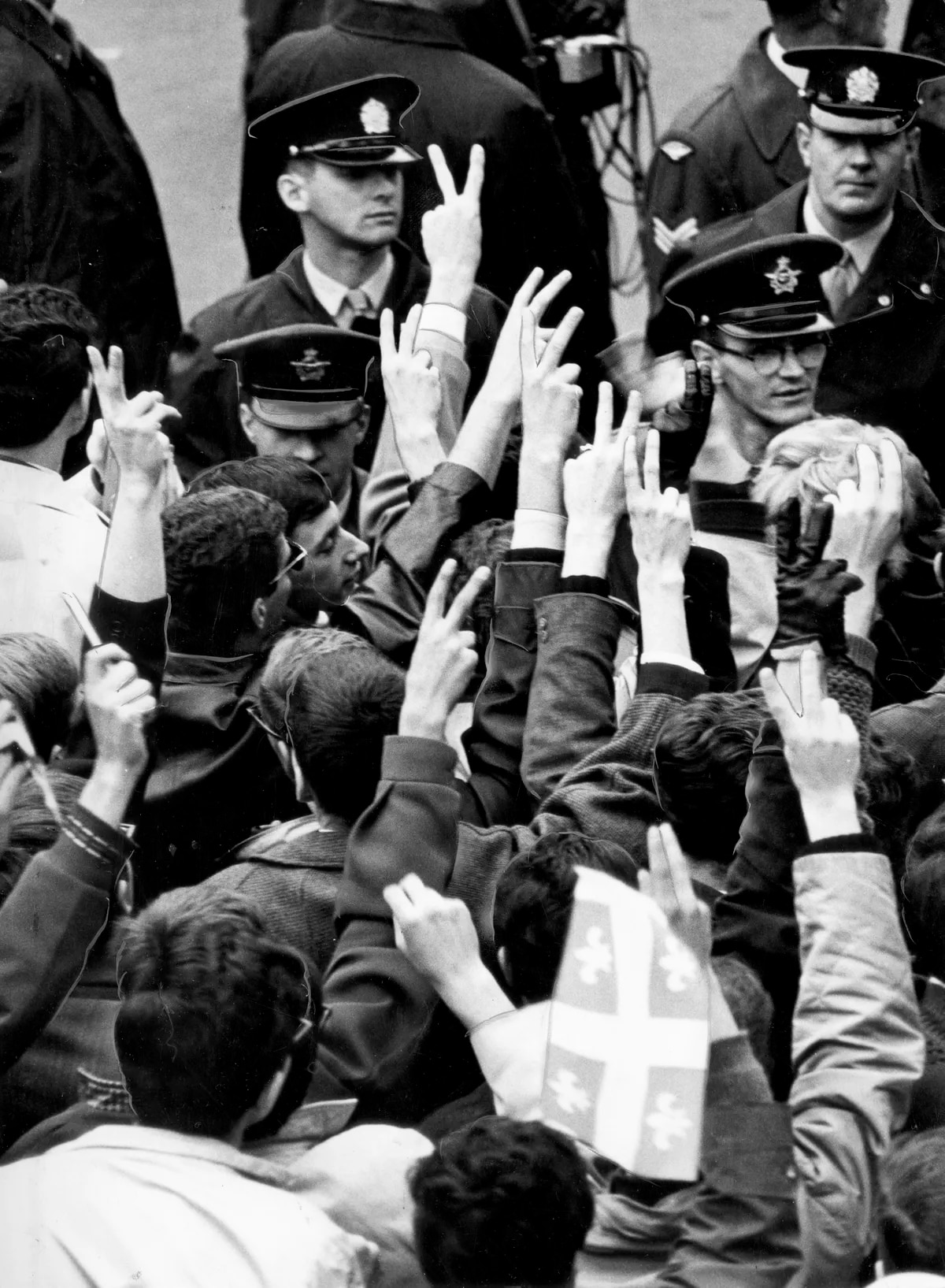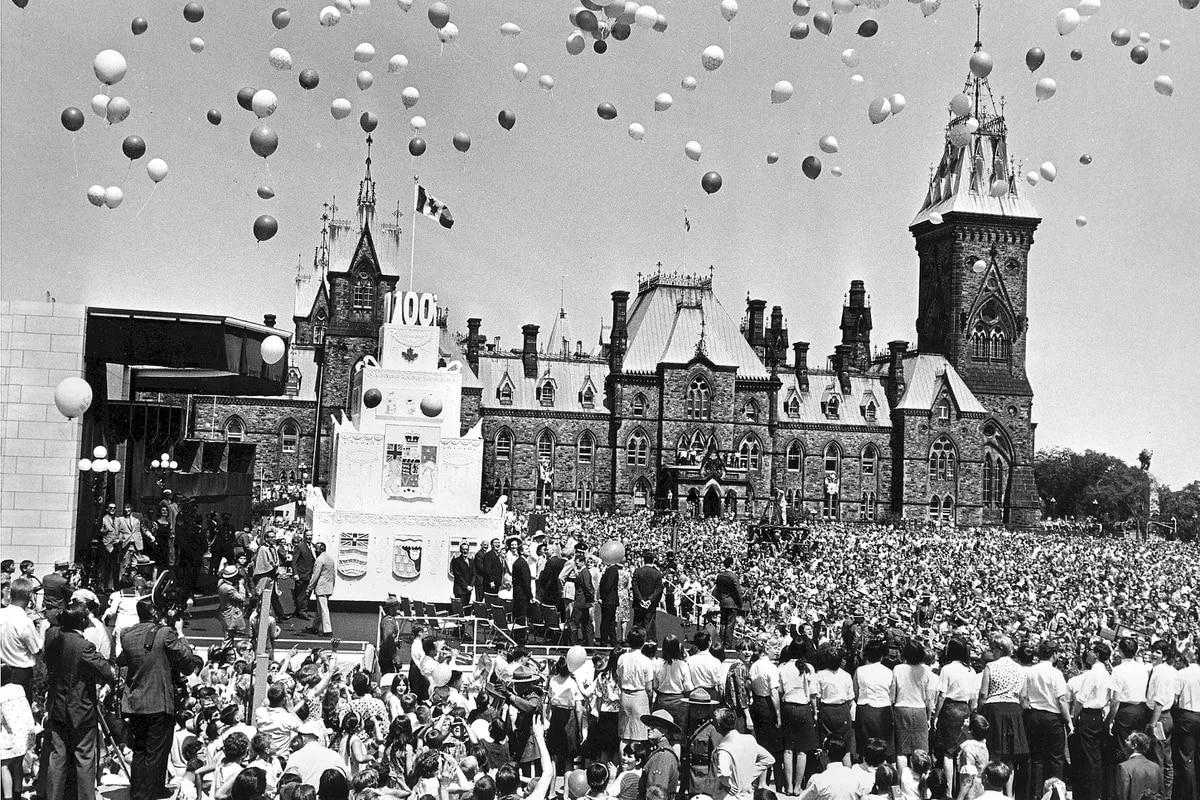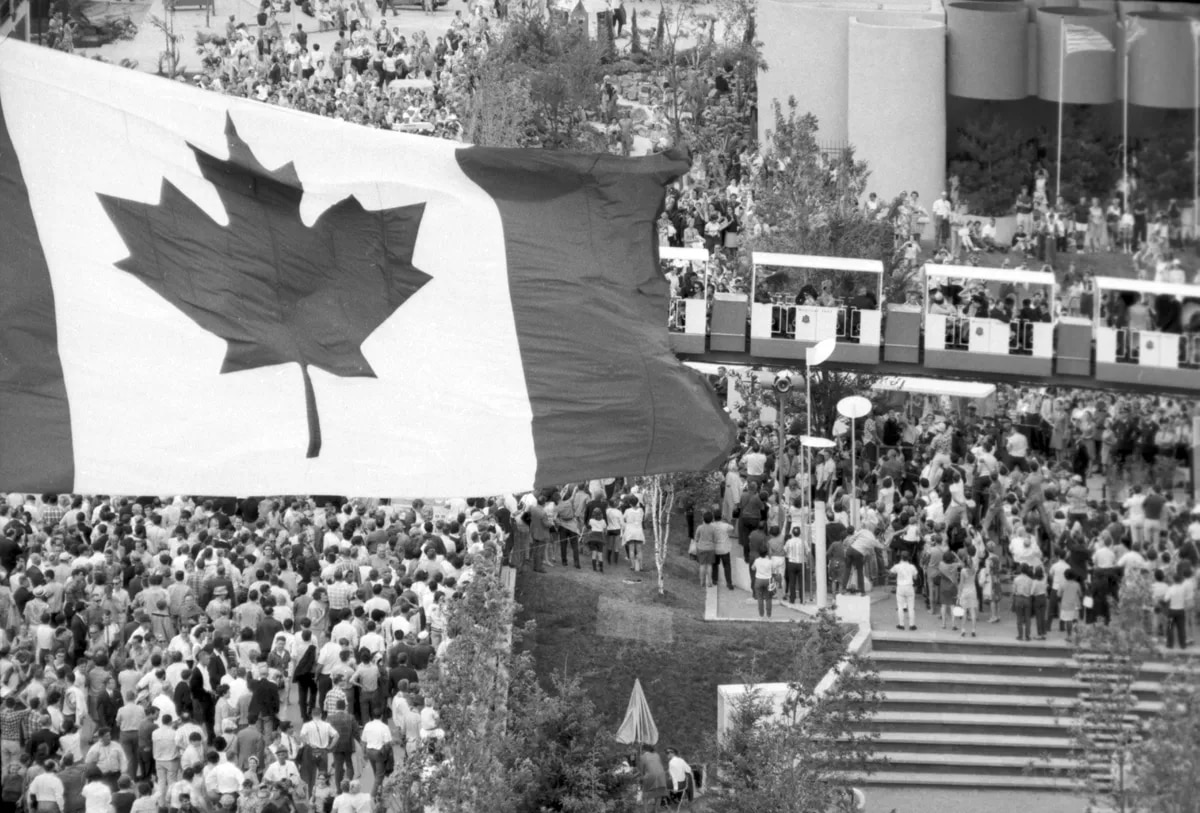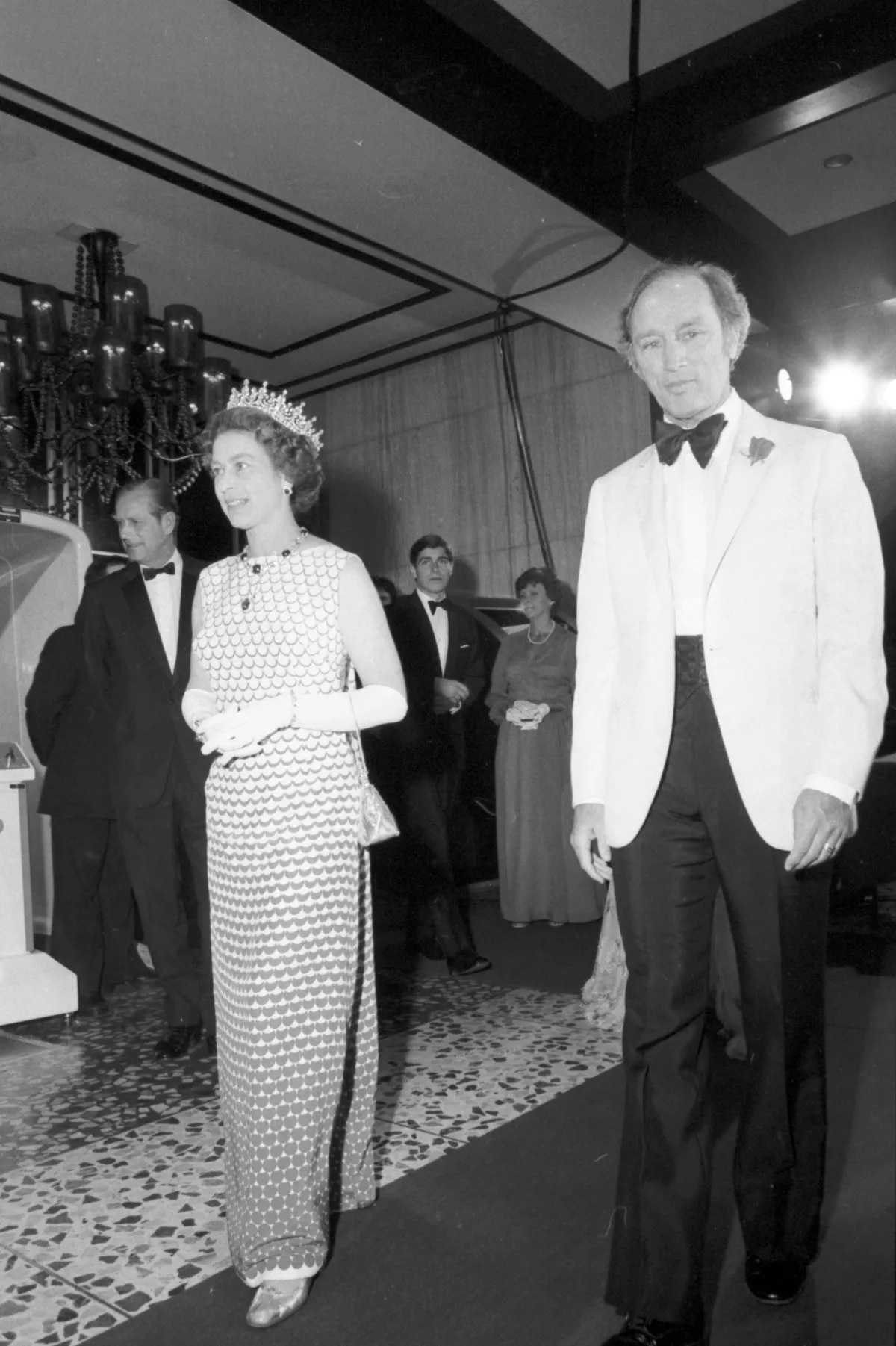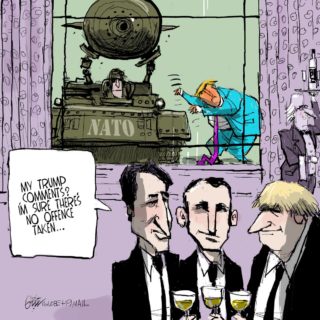Expo 67 and constitutional patriation in 1982 were just some of the highlights of the Queen’s Canadian travels over the decades.
From coast to coast to coast, the Queen came to know Canada well during her 70 years as the country’s head of state.
The Queen was the most travelled monarch in British history, visiting Canada in her official capacity 22 times between 1957 and her last visit in 2010 (not including nine unofficial refuelling stops). She toured all 10 provinces and three territories, speaking admirably of the country’s diversity, traditions, culture and natural beauty.
Former Governor-General Adrienne Clarkson, who represented the Queen in Ottawa from 2000 to 2005, said the Queen understood that Canada is the “senior dominion” in the British Commonwealth and always respected that. During official tours, political discussions were off limits, so conversations often revolved around lighter topics such as the Queen’s grandchildren, her beloved dogs and her passion for horse racing.
“She never ever mentioned anything politically about Canada, she never asked and she never would because she knows her role,” Ms. Clarkson told The Globe and Mail in November, 2021. “She doesn’t say, ‘And how is your Prime Minister’ or ‘What do you think about your cabinet?’ or anything like that.”
From the launching of the St. Lawrence Seaway in 1959 to the opening of the 1976 Olympics in Montreal to the proclamation of the Constitution Act in 1982, The Globe took a look at some of the Queen’s most memorable visits to Canada.
The early years
Princess Elizabeth – not yet queen – first visited Canada in 1951 in place of her father, King George VI, who was ill. She was accompanied by her husband, Philip, the Duke of Edinburgh. The royal couple travelled by air, train, ship and car from Oct. 8 to Nov. 12, making several stops between St. John’s and Victoria. She visited legislatures, city halls and official residences and made industry stops at paper mills, grain elevators and oil refineries.
The Queen succeeded to the throne on Feb. 6, 1952, at the age of 25, after her father died in his sleep. She was crowned on June 2, 1953.
She made her first visit to Canada as head of state in 1957, arriving Oct. 12 and staying in the National Capital Region for a four-day visit. The Globe reported that the Queen and her husband – who had just been made prince earlier that year – walked in the park near Rideau Hall, where they were staying, and picked up a few of the fallen maple leaves to press and take home. She also had $1,000 in $10 bills delivered to her to pay for gifts for Rideau Hall staff.
In a speech broadcast on TV and radio the following day, she emphasized her role as Queen of Canada and spoke highly of Canada’s “character” as a nation. “Race, language, religion, culture and tradition all have some contribution to make, and when I think of the diversity of these factors in Canada today and the achievements that have grown from their union, I feel proud and happy to be Queen of such a nation,” she said.
The Queen then opened the 23rd Parliament, marking the first time a reigning monarch commenced a parliamentary session in Canada. She wore her white satin coronation gown.
She later attended a state dinner alongside more than 100 noteworthy Canadians, including then-Prime Minister John Diefenbaker, nine lieutenant-governors and seven premiers. Quebec duckling and New Brunswick lobster were served. The Queen wore a dress featuring green velvet maple leaves, adorned with crystals and emeralds. Her fashion was closely observed by the press. The Globe described her wardrobe during her public appearances that weekend as “evidently put together to fit the background of Ottawa’s gold and red autumn hues.”
The Queen formally inaugurated work on Ottawa’s “Queensway super-highway,” now known as Highway 417, by setting off a dynamite explosion. To the surprise of many, she barely flinched when triggering the explosion.
The Queen and Philip returned to Canada less than two years later for a 45-day tour of the country – their longest Canadian visit ever. The Queen attended the opening of the St. Lawrence Seaway at the U.S.-Canada border on June 26, 1959, where she was joined by Mr. Diefenbaker and U.S. President Dwight Eisenhower. After addressing the crowd, the Queen and Mr. Eisenhower boarded the Royal Yacht Britannia and entered the lift locks, officially opening the seaway for business.
The royal couple sailed into the sweltering Toronto Harbour aboard the Britannia. Massive crowds greeted them during their stops across the city, with several people fainting from the heat.
Their first evening in Toronto featured a state dinner, hosted by then lieutenant-governor John Keiller MacKay, at the historic Royal York hotel, which removed its revolving door so the Queen could enter the building in her ball gown. Speaking at the dinner, the Queen noted her warm welcome: “Although we do not live in Canada all the time, my husband and I always feel very much at home in this lovely country. Each time I come here I am fascinated by your way of life, your homes, your work and your games and recreations.”
The couple also attended the 100th running of the Queen’s Plate, the country’s oldest thoroughbred horse race, in Toronto. The Queen presented her traditional 50 guineas in the winner’s circle, talking with the jockeys and patting the horses.
During a visit to the Calgary Stampede, the royal couple enjoyed an evening of chuckwagon racing. An exhausted-looking Queen needed some social backup from her husband during a tour of the Stampede barbecues, so Philip approached a group of men cooking beans in a massive tureen. The beans had been marinating for months, turning into what Globe columnist Scott Young described as “a state as unbeanlike as possible” and letting off a scent that even caused the mosquitoes to turn tail.
Philip peered into the tureen and, through the rising steam, said “straight from the tin, eh?” The Queen, a few metres away, smiled at the laughter that ensued from Philip’s remark. It’s unclear if he ate any of the beans.
“The moment was made. One of those little things which never will make the joke books, but which men remember,” Mr. Young wrote. The page next to his column featured an advertisement for Libby’s deep-browned beans, which read, “Don’t they look good!”
Thirty-eight First Nations welcomed the royal couple in Nanaimo, B.C., and declared the Queen a princess of the Salish Nation. She was offered a serving of Indigenous ice cream from a yellow pail but politely declined.
“Fingers had dipped into the pail earlier for appreciative licks. The Queen beamed back … but did not dip,” read a Globe report from July 17, 1959.
A few days later in the Yukon, the Queen missed a planned visit to Dawson City and Mayo because she was feeling unwell. Philip went in her place. Headlines around the world highlighted how exhausted the Queen looked. Rumours swirled about her condition, with some saying the pace of the tour was too gruelling and others suggesting she ate something that made her ill.
It was later revealed to be morning sickness from her pregnancy with Prince Andrew. The Globe reported that the Queen had quietly told Mr. Diefenbaker she was expecting and he offered to adjust her tour if needed, but she insisted on completing it.
The marathon royal tour covered more than 24,000 kilometres, capturing the attention of Canadians from all walks of life: Newfoundland fisherman, Quebec miners, Prairie farmers and lumbermen of the West.
Separatism greets the Queen in Quebec
The Queen conducted several shorter visits to Canada in the 1960s and 70s. Her 1964 visit was particularly challenging, as the mood in Quebec had changed with the rise of separatism.
The tour featured stops in Charlottetown and Quebec City for the commemoration of the 100th anniversary of the meetings of the Fathers of Confederation. The Quebec visit was clouded by threats from separatist demonstrations and concerns about a potential assassination attempt against the Queen. Some British churches held special prayers for her safety before the royal couple headed to Canada. Leading British newspapers sent their correspondents to cover the turmoil in Quebec.
Bernard Cloutier, a Paris-based promoter of the Quebec independence movement, accused the federal government of inviting the Queen to Canada as a political ploy.
“Out of the reports, some alarmist, some highly responsible, emerges a consensus: Though separatism is still a minority movement, it must be taken seriously,” The Globe reported.
Anti-monarchy protesters took to the streets as the royal couple dined at Quebec City’s Château Frontenac for an official dinner with then-premier Jean Lesage and Prime Minister Lester Pearson. The crowds chanted “Elizabeth stay home,” prompting Quebec City’s riot squad to club protesters. The royal couple was not harmed. Globe columnist Bruce West called the protests “an insult to Canada.”
The couple’s last stop in Ottawa was rather uneventful compared with their time in Quebec. They laid a wreath at the National War Memorial and attended a state dinner hosted by Mr. Pearson.
The separatist protests and security concerns left a dark mark on the 1964 visit, reflected in a Globe report from the Queen’s departure: “When the jet was airborne into the overcast, the shoulders of the RCMP officers relaxed just a little – they had been tense for nine days – and a reporter remarked: ‘The sound you hear is a national sigh of relief.’”
Expo 67, the Centennial and the Olympics
The royal couple returned to Canada in 1967 to mark Canada’s Centennial in Ottawa and at Expo 67 in Montreal. Speaking to a crowd of 25,000 people on Parliament Hill, the Queen acknowledged French-Canadians’ contribution to the nation and predicted they would have a growing role in Canadian society. She encouraged Canadians to settle their differences through “tolerance, goodwill and understanding,” as the Fathers of Confederation had done 100 years prior.
However, the security concerns that surrounded the 1964 Quebec visit lingered as the Queen made her way up the St. Lawrence River for Expo 67. A Quebec separatist group warned that “French-Canadian patriots” would intercept the Britannia’s route to Montreal. The yacht trip went smoothly despite the threats.
When the Queen arrived at the Expo, she thrilled crowds as she took an impromptu monorail ride, breaking from the intense security that surrounded her. “The Queen salvaged Quebec’s honour. … A Queen in a minirail is not seen every day. A Queen who escapes from the straitjacket of the RCMP is not to be seen so often either,” read Montréal-Matin, a Conservative-leaning French-language tabloid.
The Queen’s visit to the Expo pavilions was watched closely. Reporters noted how she spent 30 minutes at the Ontario pavilion – longer than at any other province’s spot – and only made one stop at the pavilion dedicated to Indigenous peoples.
Andrew Delisle, chief of the Mohawk Council of Kahnawake, showed the Queen around this pavilion and did not shy away from describing the harsh truths about the mistreatment of Indigenous peoples in Canada. The Queen fell silent listening to Mr. Delisle. She did not acknowledge signs with slogans reading “The white men fought each other for our lands, and we were embroiled in the white man’s wars” and “Give us the right to manage our own affairs.” Mr. Delisle said he expected a bit more of a reaction from the Queen during the 13-minute tour.
The Queen returned to Montreal in July, 1976, to formally open the Olympics. The Games were a family event, with the Queen’s daughter, Princess Anne, competing as a member of the British equestrian team. The Queen was accompanied by Philip and their sons, Charles, Andrew and Edward, as well as Anne’s husband, Mark Phillips.
Anne had a rough go at the Games. Her horse, Goodwill, fell on one of the jumps, taking Anne down with it. The Princess suffered some bruising and a minor concussion. A reporter standing near the Queen said she showed no emotion, simply nodding, when her daughter fell. The British team eventually pulled out of the competition after two of their horses were injured.
The Queen’s time in Montreal went much more smoothly on the security front compared with previous visits. The royal couple even drove through downtown streets in an open car.
The tour included a stop in Nova Scotia, where the royal couple visited a shipyard. They also went to Fredericton, where the Queen warned that bilingualism is “not an easy thing” to preserve. She said the province, which was 40-per-cent French-speaking at the time, served as an example of how people from different cultural backgrounds can co-exist.
The Queen returned to Ottawa in October, 1977, marking her Silver Jubilee. Then-Prime Minister Pierre Trudeau, who had introduced an official policy of multiculturalism and a bilingual framework in 1971, hosted a state dinner at Rideau Hall for the Queen, where he announced that the government had set aside $300,000 to help more young Canadians become bilingual.
The Queen delivered the Throne Speech on Oct. 18, highlighting national unity concerns, particularly among Quebeckers, the Atlantic Provinces and the West.
“Given the new economic realities to which Canada must adjust, and the urgency of promoting linguistic and cultural harmony, it is readily apparent that Canada is now entering a new era,” she said. “It can be an era of increasing confrontation, tension and division or an era of enhanced freedom, co-operation and unity of purpose. Fundamentally, the choice must be made by every citizen every day.”
Royal proclamation of the Constitution Act
One of the Queen’s most notable visits to Canada took place from April 15 to April 19, 1982, to mark the proclamation of the Constitution Act. Pierre Trudeau hosted a luncheon at his official residence, attended by 11 cabinet ministers and premiers William Davis and Richard Hatfield – the only two provincial leaders who supported the prime minister’s constitutional position. Mr. Trudeau’s sons, Justin, Sacha and Michel, greeted the Queen in the hallway before the luncheon.
On April 17, the Queen made her way to Parliament Hill, where some 32,000 people gathered in the rain to watch her and the prime minister sign the proclamation of the Constitution Act, officially severing Canada’s final colonial tie to Britain. Security for the outdoor ceremony carried a price tag of about $250,000 – a quarter of the $1-million budget for the event. Guests were soaked in a downpour and couldn’t hear any of the speeches in the wind, as the words echoed off the Parliament buildings. Some people covered their heads with chairs left empty by guests who chose to leave. The wind nearly blew the Queen’s speech out of her hands at one point.
“Visibly unsettled, she deliberately turned the page and looked toward Prime Minister Pierre Trudeau with a gesture that seemed close to helpless despair. He had settled the Constitution, but he let everyone down on the weather,” read a Globe report.
With a few signatures, Canada achieved full independence and enshrined the Charter of Rights and Freedoms in its Constitution. However, The Globe’s Ottawa bureau reported that the Privy Council Office nearly forgot an important detail for the historic moment: an appropriate pen to sign the constitutional document. The day before, a staffer was sent to Birks, the high-end jewellery and silverware store, to buy a $75 gold pen for the occasion.
Pierre Trudeau raised eyebrows as the Queen departed Ottawa. He performed a pirouette on the tarmac of the Ottawa airport – a gesture he made famous in 1977 when he executed the ballet spin behind the Queen’s back at Buckingham Palace.
The final visit
The 84-year-old Queen made her 22nd official and final visit to Canada in 2010, deemed “the year Canada grew up” by The Globe and Mail. Vancouver had hosted the Winter Olympics in February, Canada hosted the G8 and G20 summits, and the Queen joined Canadians to celebrate the country’s 143rd birthday on Parliament Hill.
Accompanied by Philip, the nine-day tour started in Halifax to mark the navy’s 100th anniversary, where then-Prime minister Stephen Harper greeted the Queen before they ventured to Ottawa for Canada Day celebrations.
“We could imagine no better gift on our national birthday than to share it with our Queen,” Mr. Harper said.
The Queen wore a Maple Leaf pin and a white hat with a large red flower as she celebrated Canada Day alongside 100,000 people on Parliament Hill. While in Ottawa, she also met with then-Liberal leader Michael Ignatieff, who said she has a “magnificent sense of humour and sense of the absurd.”
The Queen departed for Winnipeg, where she dedicated a cornerstone for the Canadian Museum for Human Rights. The cubic foot of granite came from the Runnymede meadows on the upper reaches of England’s Thames River, where the Queen’s ancestor, King John, signed the Magna Carta on June 15, 1215. The stone would eventually be set in interior masonry beside the museum entrance doors used by students.
The Queen then made her way to Toronto to attend the 151st running of the Queen’s Plate at Woodbine Racetrack, marking her fourth attendance at the event.
A trip to nearby Waterloo, Ont., featured a stop at the Research in Motion facility. The Queen was presented with a white BlackBerry Bold 9700 – all the rage at the time – but an RIM executive assured reporters she was already an avid user of the device.
Back in Toronto on the evening of July 5, the Queen attended a dinner at the Royal York – the same hotel she graced during her 1959 tour of Canada. However, the event got off to a rough start when a power outage left parts of the city in the dark during a blistering heat wave. After a few minutes of darkness, the hotel’s backup generator lit up some chandeliers and the 380-person dinner went ahead. A Royal York spokesperson said the Queen was comfortable, and other guests reported that the air conditioning was still working.
Mr. Harper addressed the Queen and invited her to unveil a new Hockey Hall of Fame exhibit commemorating Canada’s gold-medal victories in hockey at the Vancouver Olympics earlier that year.
“As Queen of Canada, you share in the recent triumph of our Canadian Olympic hockey champions,” Mr. Harper said. “And so we say that you are not only victorious, happy and glorious, you are also Canada’s most valuable player.”

